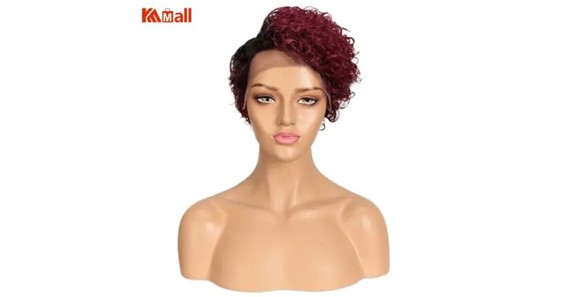Women with hair loss due to chemotherapy or radiation therapy often choose at least one wig and then alternate wearing wigs and hats or scarves. Remember that your hair will grow back, although it may not be the same thickness, texture, and color as it was before the treatment.
What can I do to prepare for extreme hair loss?
· Make sure you really need a wig.
· If you have long hair, consider cutting it short to make changing a wig or other headgear less noticeable.
· Hair usually falls out 2 to 3 weeks after your first chemo.
· Once it starts to come off, consider shaving your head (use an electric shaver to avoid cuts).
· This can help you better control yourself and prevent you from waking up with itchy hair all over your pillow.
· If you still need something to grab your hair, you may want to buy a hairnet.
· You may notice that some hair starts to grow back between treatments, but then falls out.
Your new hair may be curly, straighter, thicker or thinner; or it may even have a new colour. Usually, this change is short-term; over time, your hair is likely to return to its pre-treatment state.
Wig return and your insurance policy:
· Make sure you can return your wig within a reasonable amount of time if needed, without paying for restocking.
· Check your private insurance policy. You can help pay for a wig with a prescription from your doctor for a “skull prosthesis” or “hair prosthesis.”
· Unfortunately, Medicare Parts A and B do not cover the cost of wigs for people receiving cancer treatment; however, they may be tax-deductible expenses.
· If you can’t afford a wig
· Ebeauty.com offers free “gentle use” and refurbished wigs to any woman anywhere in the country who needs a wig.
How to choose a wig
Before starting treatment
· Take a photo of your current hairstyle.
· Keep a strand of hair from the top of your head with lighter hair in case you want to match your wig to your current color.
· Use natural light; outside or near a window to determine if the wig matches the sample.
· Measure your head with wet or smoothed hair.
· Make sure your wig is adaptable; your head size can be up to one size smaller due to hair loss.
Natural and Synthetic
Wigs can be made from natural human hair or synthetic materials. When comparing high-quality synthetic wigs, there is not much difference in the appearance of the hair. The main difference is cost and maintenance, so choose the type that suits your needs. Synthetic wigs are cheaper, maintain style no matter the weather, and won’t fade over time. However, they don’t last as long as wigs made from human hair and don’t have as much styling flexibility.
Natural human hair wigs are more expensive and may have fewer color options, but can be cut, styled, and color just like your own hair. The downside is that they require more care and maintenance, are weather-sensitive, and may need to be taken to a stylist to restyle or color over time.
How to choose a color
Colour choice is a personal choice, but there are some general rules:
· Lighter colors tend to be flatter with age and provide a softer, more natural look.
· Chemotherapy can make your face look pale. If your hair is black, consider dyeing it dark brown for a more flattering look.
· If you have brown hair and it’s gone grey, choose a light brown wig with subtle highlights if possible.
White also works for some people.
Dare to try new things! Now is your chance to experiment without paying for a lot of expensive colour services at the salon or barbershop. You might decide to try a new hair color on your wig and be very happy with the compliments you receive.
How to measure a wig
When choosing a Kameymall wig, look for adaptable ones; when you lose hair, your head can be up to one size smaller. Follow the instructions that came with the wig carefully.
· Remove the wig from the hairnet it came in; shake it gently to restore its shape.
· Holding the wig from the sides, place the braided tab at the back, place it in the centre of the forehead, and sweep it from front to back. Then adjust the front of the wig cap so that it extends about an inch (2 ½ cm) beyond your natural hairline. If pulled too far forward, the wig will look unnatural and should never be worn over your ears.
· The flap on the ear should be even and slightly in front of the ear. Push the ribbon on the flap towards your face so the wig is flat against your head.
No more impossible styling days!
While losing hair can be scary, many women like to try on wigs with hairstyles and colours they would never have dared to try on their own. Some women will buy more than one wig and change them according to their mood, outfit or occasion.
To Know Some Great Stuff Do Visit CaresGuru
To Know Some Great Stuff Do Visit CrazzyCricket
To Know Some Great Stuff Do Visit CricFor


